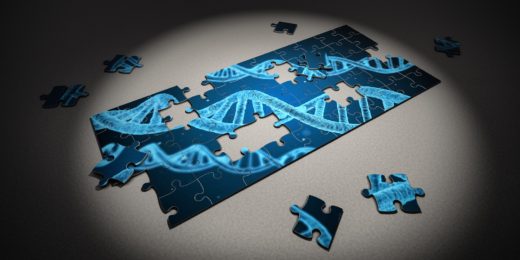The gene-editing CRISPR-Cas9 system and other DNA-altering tactics are often likened to editing a Word document through cutting and pasting. But the reality is, editing DNA is not always clean cut. In keeping with the same simile, gene editing can actually be more akin to editing the word "book" to "boot," and as a result, several paragraphs later, "kangaroo" accidentally became "tangaroo."
This idea — that gene editing can cause unintended changes to DNA — is something known as off-target edits or off-target mutations. And while scientists know they occur, it's hard to tell at what rate and in which genes.
Lars Steinmetz, PhD, professor of genetics at Stanford, thinks he has a solution to that problem. His lab has created something called "genome-wide off-target analysis by two-cell embryo injection" — GOTI for short — and it allows scientists to tally how many accidental, off-target edits were made in the process of changing other DNA.
"GOTI allows you to assess the accuracy, safety and efficacy of using CRISPR-cutting and CRISPR-editing technologies in mammalian embryos," said Steinmetz. "Ideally, you can use the data from GOTI to rank different gene-editing methods and determine which one is the best for your particular purpose."
Steinmetz; Wu Wei, PhD, research scientist and a first author on the study, and collaborators from multiple institutions in China published a paper detailing the research in Science First Release.
In genetics, technologies such as CRISPR are enabling researchers to both inhibit entire genes from functioning (through something known as a "knockout") and alter specific building blocks, or base pairs, of DNA in a more fine-tuned version of editing, called base pair editing.
Base pair editing (like the book/kangaroo example above) is especially alluring when thinking about genetic disease therapy. Theoretically, CRISPR base pair editing could switch out faulty DNA that's causing a specific disease, and render the gene healthy again.
Unfortunately, the seemingly simple solution is complicated by off-target edits. "If there are many off-target mutations," Steinmetz said, "even if you fix the problem you're after, the accidental mutations might create other problems that could be worse than the original problem you tried to fix." So being able to track them, and keep them to a minimum, is critical.
To Steinmetz's knowledge, this is the first tool that could be used to keep tabs on off-target edits in mammalian embryos. Others have attempted to track them in the past, but it's proven tricky. One seemingly reasonable effort tried to compare the mutations of an edited mouse embryo against a non-edited embryo. The problem is that no two mice are genetically identical — so how can you tell which mutations in the edited embryo came from gene editing, and which are simply natural differences?
GOTI gets around that problem by editing and analyzing the DNA from one mouse embryo consisting of just two cells (which originally shared the same DNA). In the study's experiments, the team only altered the DNA in one cell, leaving the other cell alone. They then allow to two cells to replicate, amassing enough DNA to sequence properly. Finally, they genetically analyze both edited and non-edited cells, comparing the DNA mutations between them to see if gene editing had affected more than just their target.
His team performed this tactic for multiple types of gene editing and saw that during knockout alterations, in which the DNA is simply broken, rather than rearranged, the off-target mutations remained low, if nonexistent. The same went for base pair edits made to one building block in particular, called adenine.
But when they made edits to a different basepair, cytosine, the mutation rate skyrocketed, increasing 20-fold, from 10 to 200. They suspect that cytosine is more error prone due to one specific protein involved in swapping the base pair out. The protein, apobec1, is essentially hyperactive, changing more cytosine nucleotides than intended.
As far as using GOTI in the context of human gene therapy, Steinmetz said that will be a larger conversation surrounding CRISPR editing in humans, overall. For now, he sees GOTI as a tool that can provide insight into the efficacy and safety of various gene-altering technologies.
Photo by Will Myers






